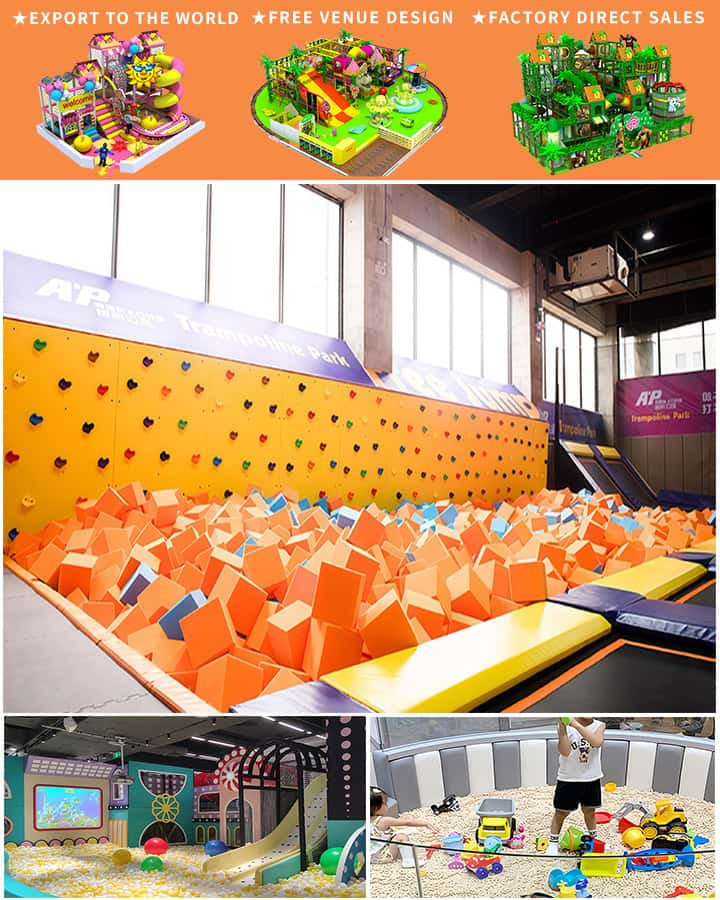Kids’ playgrounds are magical havens where children can explore their imagination, develop physical skills, and make lifelong memories. These playgrounds are filled with an array of equipment designed to engage young minds and bodies in various ways. This article will guide you through some common types of kids’ playground equipment, including their names and pictures, so you can better appreciate the variety and significance of these play structures.
1. Swing Sets
Description: Swing sets are perhaps the most iconic piece of playground equipment. They come in various designs, from simple single swings to elaborate structures with multiple swings, slides, and climbing frames.
Benefits: Swings help children develop balance, coordination, and motor skills. The act of pushing off and gliding through the air is not only fun but also beneficial for building upper body strength.
2. Slides
Description: Slides are a staple in any playground, often made of metal or plastic and available in various shapes such as straight, spiral, and tunnel slides.
Benefits: Sliding helps improve children’s sensory processing and spatial awareness. It’s also a thrilling experience that encourages social interaction and cooperation when children line up and wait their turn.
3. Seesaws
Description: A seesaw consists of a board balanced on a pivot with seats at either end. When one child goes up, the other comes down, creating an engaging push-and-pull motion.
Benefits: Seesaws promote cooperation and coordination between children. They also help in developing balance and understanding of basic physics concepts like weight distribution and leverage.

4. Monkey Bars
Description: Monkey bars are horizontal metal bars suspended above the ground that children can hang from or move across by gripping them with their hands and arms.
Benefits: This equipment strengthens upper body muscles, enhances hand-eye coordination, and improves overall fitness. Children also learn patience and perseverance while mastering the challenge of crossing the monkey bars.
5. Climbing Walls
Description: Climbing walls are vertical structures equipped with holds and footholds for children to climb using their hands and feet. They can range from small, manageable heights for younger kids to taller, more challenging ones for older children.
Benefits: Climbing walls foster physical strength, problem-solving skills, and resilience. They also build confidence as children overcome the challenges presented by the wall’s height.
6. Jungle Gyms
Description: Jungle gyms are large, interconnected structures made of metal bars and platforms that offer various routes for climbing, balancing, and exploring.
Benefits: These versatile pieces of equipment encourage creativity and gross motor development. Navigating the jungle gym helps children improve their agility, coordination, and spatial reasoning.
7. Merry-Go-Rounds
Description: Merry-go-rounds are circular platforms that spin when pushed. They can be standalone units or part of a larger play structure.
Benefits: Spinning on a merry-go-round enhances balance and coordination. It also provides a fun, dynamic activity that can be enjoyed alone or with friends.
8. Spring Riders
Description: Spring riders are devices where a child sits or stands on a springed platform, bouncing it up and down. They can be in the shape of animals or other fun characters.
Benefits: Spring riders provide a great cardiovascular workout while also being incredibly enjoyable. They help children develop leg strength and coordination.
9. Balance Beams
Description: Balance beams are usually narrow wooden or plastic paths elevated just a few inches off the ground. Children walk along them to practice balance and stability.
Benefits: These beams enhance balance, concentration, and muscle control. They are excellent for developing coordination and self-awareness.
10. Play Houses
Description: Play houses are miniature structures resembling real buildings. They often include features like doors, windows, and sometimes even pretend furniture.
Benefits: Play houses stimulate imaginative play and role-playing, which are crucial for social development. They also provide a sense of security and comfort as children create their own little worlds.
Conclusion
The variety of playground equipment plays a significant role in children’s development and wellbeing. Each piece of equipment offers unique benefits and opportunities for learning, growth, and fun. By understanding the names and uses of these structures, parents, caregivers, and educators can better appreciate the value they bring to children’s lives. Encouraging regular visits to playgrounds ensures that children have ample opportunities to develop their physical abilities, boost their creativity, and enjoy the sheer joy of playing.




